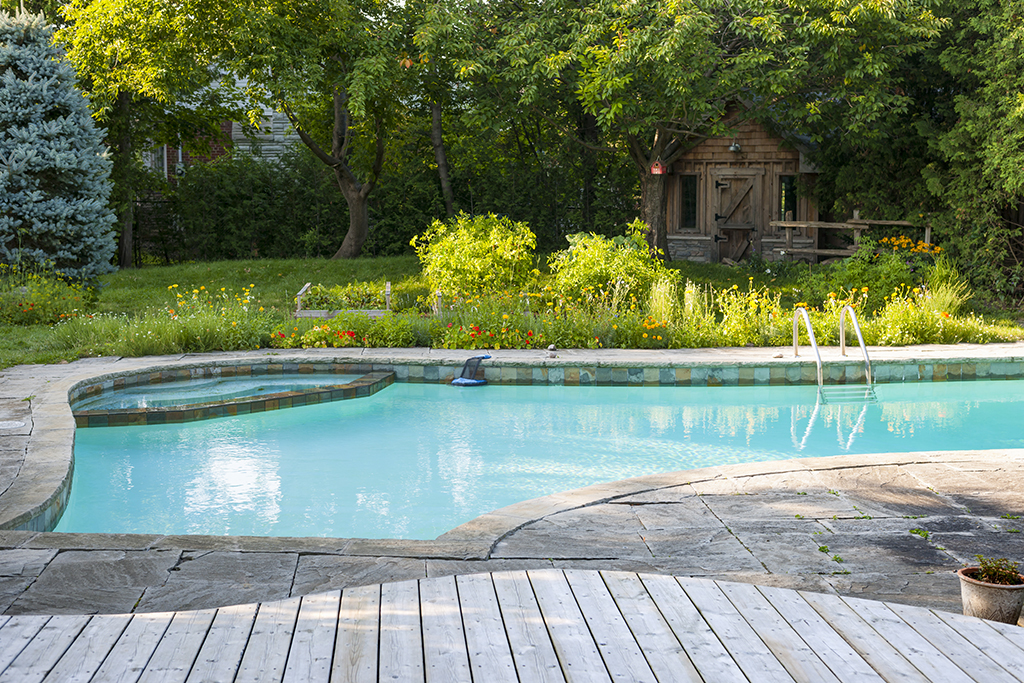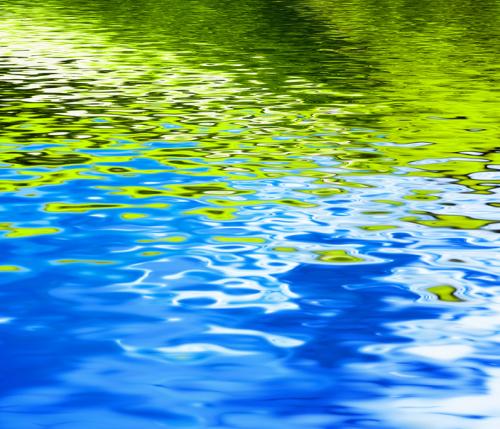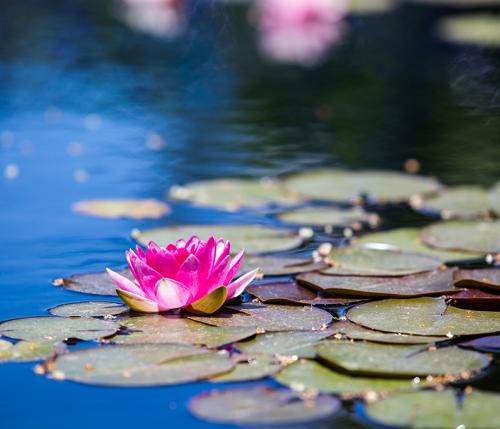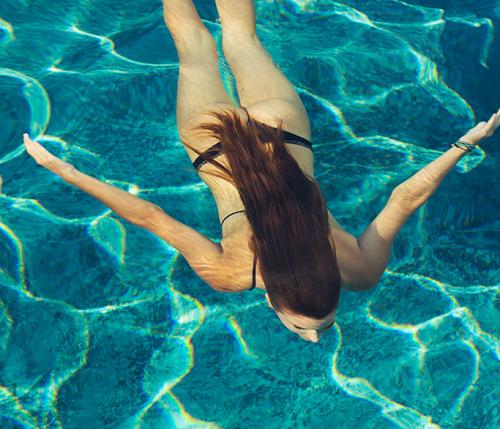Outdoor swimming is an entirely different experience, one that’s filled with beautiful surrounding views. There are few things as luxurious as having a swimming pool in your own back garden but there’s an increasing trend for stunning natural pools to adorn your exterior space with.
Often built from natural materials like stone, they have a rustic appeal and are the perfect way to connect with nature. There are many benefits to this type of pool, from their sustainable credentials to the fact that they consume up to 40% less energy than a conventional pool.
What is a natural swimming pool?
Natural swimming pools are typically designed as two zones, usually of equal size, which are separated by a submerged or hidden wall, usually a band of stone. One of the zones is for swimming while the other serves as a water garden for plants and wildlife, designed to blend with the surrounding landscape.
There are several benefits to natural pools, the first being that the water is naturally purified using biological filtration from plants and microorganisms rather than chemicals. This makes them a healthier option that still provides clean water for you to swim in.
And because there’s no need for chemical products, the pool reduces pollution into the environment and is better for the surrounding landscape, wildlife and vegetation to enhance biodiversity. In addition to the absence of chemicals and a healthier lifestyle, natural pools are also low maintenance which makes them a popular option for homeowners. So, what should you consider when designing a natural pool?
Location
The location of your pool should be the first step in the design process. You want to avoid any wastewater flow from the main property and ensure that you’ve allowed for watertight sides for the pool itself. You also need to consider the space you have for the size pool you want to install. For example, a pool with a swimmable area of 20m2 you will need the entire pool to be 40m2. A natural pool can be as big or as small as you like, but bear in mind that around 30% of the space needs to be dedicated to the regeneration bank, so make sure you’ve calculated for the space needed.
How to Design a Natural Swimming Pool
An increasing trend and the perfect way to connect with nature
Lining materials
The material used to line your pool is one of the most important elements of designing, as it’s what allows the pool to hold water. The most natural option is bentonite clay, which bonds with the soil so the water can’t get through the layers and this keeps your pool full. But it’s not always the most suitable option for sandy or drier soils, as the bond might not be durable enough to retain water. Plastic liners are also an option, such as those made from EPDM or PVC, or you may want to choose a more durable shell such as ceramic liners which are tough, non-porous and prevent bacterial build-up.
Plant life
How much you choose to add greenery to your pool depends on the look you’re trying to achieve, but you will need at least some plants for your pool to be algae-free and clean. The plants you choose should include floating plants, submerged oxygenators, bog plants and shallow maginals to add visual interest but also benefit from the different properties they bring to the water. Some of the popular flora to plant in natural pools include water lilies, pondweed, water hyacinths and aquatic irises.
Aeration
The plants you choose for your pool are there to filter out contaminants and keep the water as clean as possible, but in order for that to be effective, the pool needs to have plenty of aeration and oxygen for these plants to thrive. This ensures that the plants stay healthy and that they’re able to process the bacteria properly. To make sure your pool has plenty of aeration, it’s a good idea to install a pump to keep the water moving continuously and incorporating plenty of oxygen.
Added features
Once you’ve determined the size, shape and materials for your pool, the fun begins in considering the added features you want to include, and there are endless design choices you can be inspired by. For example, maybe you want to have steps leading to the pool or a dock over the water so you have a place to dive off from or sit by the water. Some people like to add a dramatic focal point such as a waterfall that suits the rustic design of a natural pool perfectly and also helps to move the water through the pool for added filtration.
Natural pools offer health and environmental benefits that are putting them top of the list when it comes to home swimming pools. In addition to being chemical-free and better for the surrounding environment, natural pools are also visually appealing, blending seamlessly with the rest of your garden and give you the opportunity to be one with nature when you’re swimming or relaxing. There are plenty of ways to customise your pool, from the plants you choose to put in, to the surrounding features and the size or shape you go for, to make it truly unique to you and your property.





 Workspace Design Show: 2024 UK Edition
Workspace Design Show: 2024 UK Edition  Open-air elegance: Claudio Bellini x Higold, the symphony of outdoor design
Open-air elegance: Claudio Bellini x Higold, the symphony of outdoor design  A stylish oasis for outdoor spaces
A stylish oasis for outdoor spaces  How to capture your property's best features
How to capture your property's best features